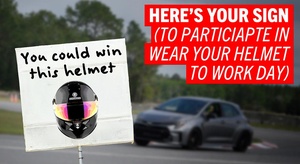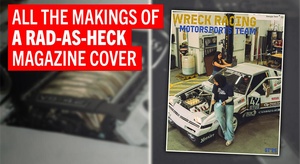
[Editor's note: This article originally appeared in the November 2009 issue of Grassroots Motorsports.]
As we fine-tune our setups, we often make small tire pressure adjustments to help balance the car and manage tire wear. Small changes can make a difference, and the gap between winning and second place can be smaller still. So how accurate is your tire pressure …
Read the rest of the story
Hopefully this will get some replies with personal experiences.
One time at an autocross I was checking my tires to adjust them and another racer came over with a high end dial gauge and offered to show me how accurate it was. Of course I wanted him to show me, I'm always on the lookout for cool gadgets. The neat part was I had a digital gauge that was the twin to the low cost digital gauge tested here and the readings were identical between his gauge and mine.
Love the mechanical dial gauges but they are fragile. I have found digital gauges both fragile and unreliable. I hate battery powered anything when at remote locations like most autocross locations and many tracks.

kb58
SuperDork
6/23/22 1:52 p.m.
Well the short answer is "yes", but the real question is, "by how much", which could/may vary widely between brands and measurement method.
Also take care in selecting the right gauge for the right application. I encountered a successful oval-track racer who was struggling mightily. He then got faster. I found out later what went wrong.
He was using a tire pressure gauge intended for trucks rather than race cars, since his regular gauge broke. His pressures were way off. A gauge has a sweet spot for its accuracy. If you're looking to measure tires with pressures around 10psi, a truck gauge won't have anywhere close to the accuracy you need for that range.
For HPDE days I use a dial gauge w/bleeder valve. After the first session I typically bleed off 6-8 psi of really hot air, probably near 180 F. Any idea how accurate the gauge is at that point?

PT_SHO
New Reader
6/27/22 2:49 p.m.
In reply to MisterJA :
OOOooo, great question. I was at Thunderhill for an autocross this weekend. Afternoon conditions, air 105F, track surface 135+, tire tread surfaces 140+ after a couple of runs. The air coming out as I was bleeding the tires made it uncomfortable to even be in the way of it!
So here's what you do. Read off a tire that hasn't been run and is in the shade. Then bleed off the tire you're interested in. Then go back to the shade tire and take a reading of the "known" pressure. If it changed much, there's your answer. Extra credit: if it changed, then bleed a little, maybe 1/2 psi, through your gauge and see if it cools it enough to make a difference. YMMV.






























